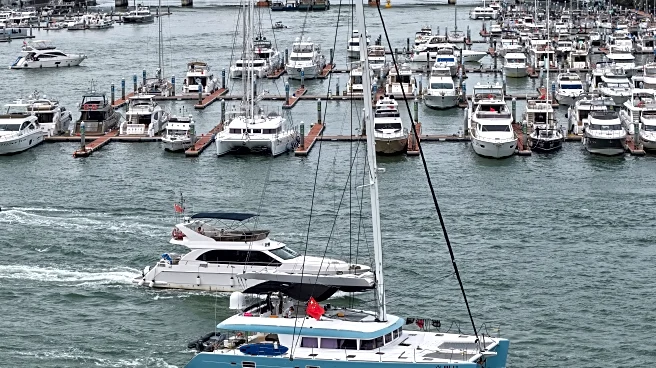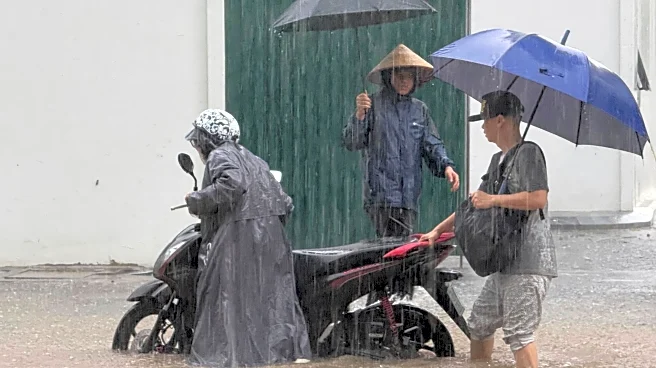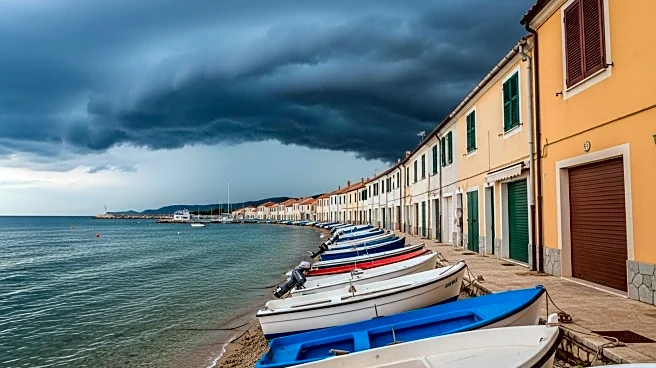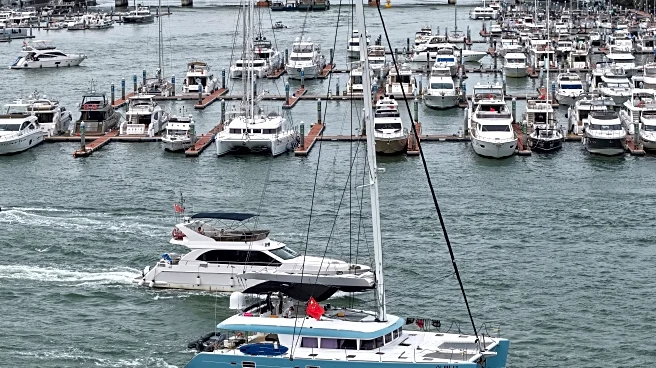Rapid Read • 7 min read
Vietnam is facing significant disruptions as Typhoon Kajiki, the strongest storm of the year, approaches landfall. The government has evacuated hundreds of thousands of people from high-risk areas in provinces such as Thanh Hoa, Quang Tri, Hue, and Danang. Schools and airports have been closed, and over 16,500 soldiers along with 107,000 paramilitary personnel are involved in evacuation and rescue operations. The storm has already caused flooding in Hanoi, uprooted trees, and knocked down power poles. The national weather agency reports maximum sustained winds of 117 kph, with flash flood and landslide alerts issued.
AD
The impact of Typhoon Kajiki is significant for Vietnam, a country frequently affected by severe weather events. The evacuation of hundreds of thousands highlights the potential for widespread damage and disruption. The storm's effects on infrastructure, such as closed airports and damaged power lines, could have lasting economic impacts. Additionally, the involvement of military and paramilitary forces underscores the seriousness of the situation. The storm's trajectory also poses risks to neighboring countries, potentially affecting regional stability and economic activities.
As Typhoon Kajiki continues to move inland, Vietnam will likely face ongoing challenges related to flooding and infrastructure damage. The government and emergency services will need to focus on recovery efforts and providing aid to affected populations. Monitoring the storm's path is crucial to anticipate further impacts in Vietnam and neighboring countries like Laos and Thailand. The international community may offer support, and regional cooperation could be essential in managing the aftermath.
The frequent occurrence of such storms raises questions about climate change and its impact on Southeast Asia. Vietnam's preparedness and response strategies are critical in mitigating the effects of these natural disasters. Long-term solutions may involve improving infrastructure resilience and investing in sustainable development to reduce vulnerability to future storms.
AD
More Stories You Might Enjoy











